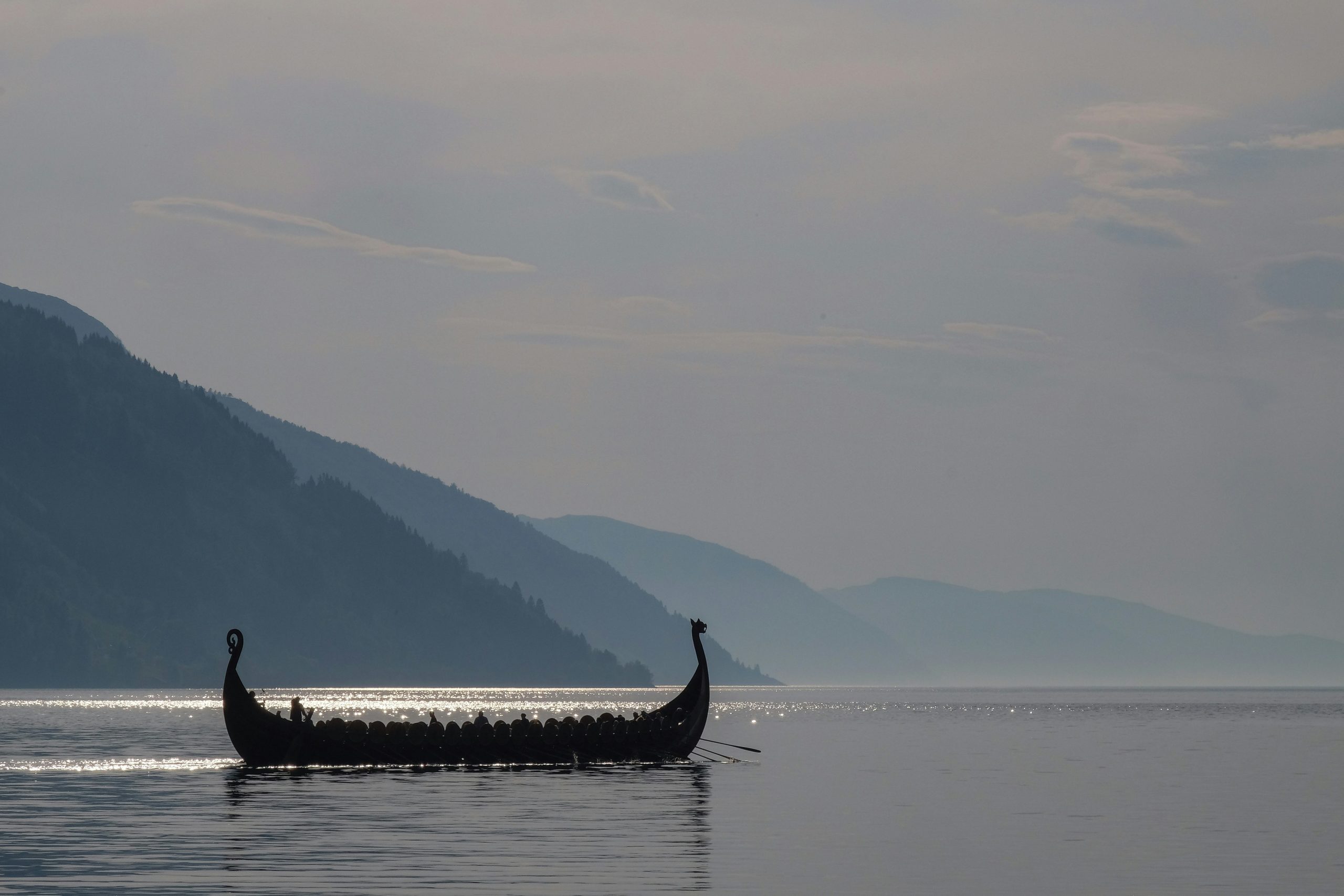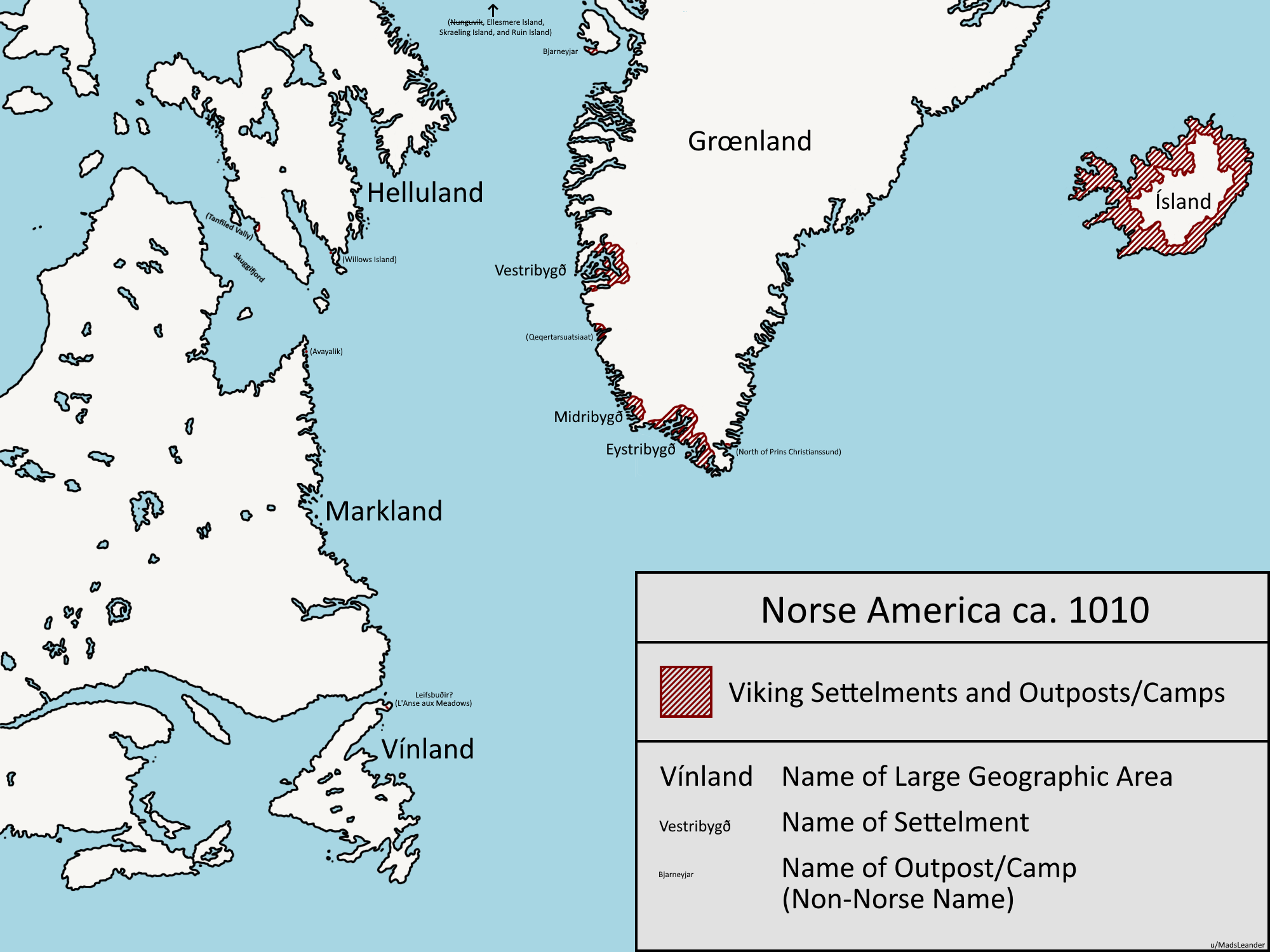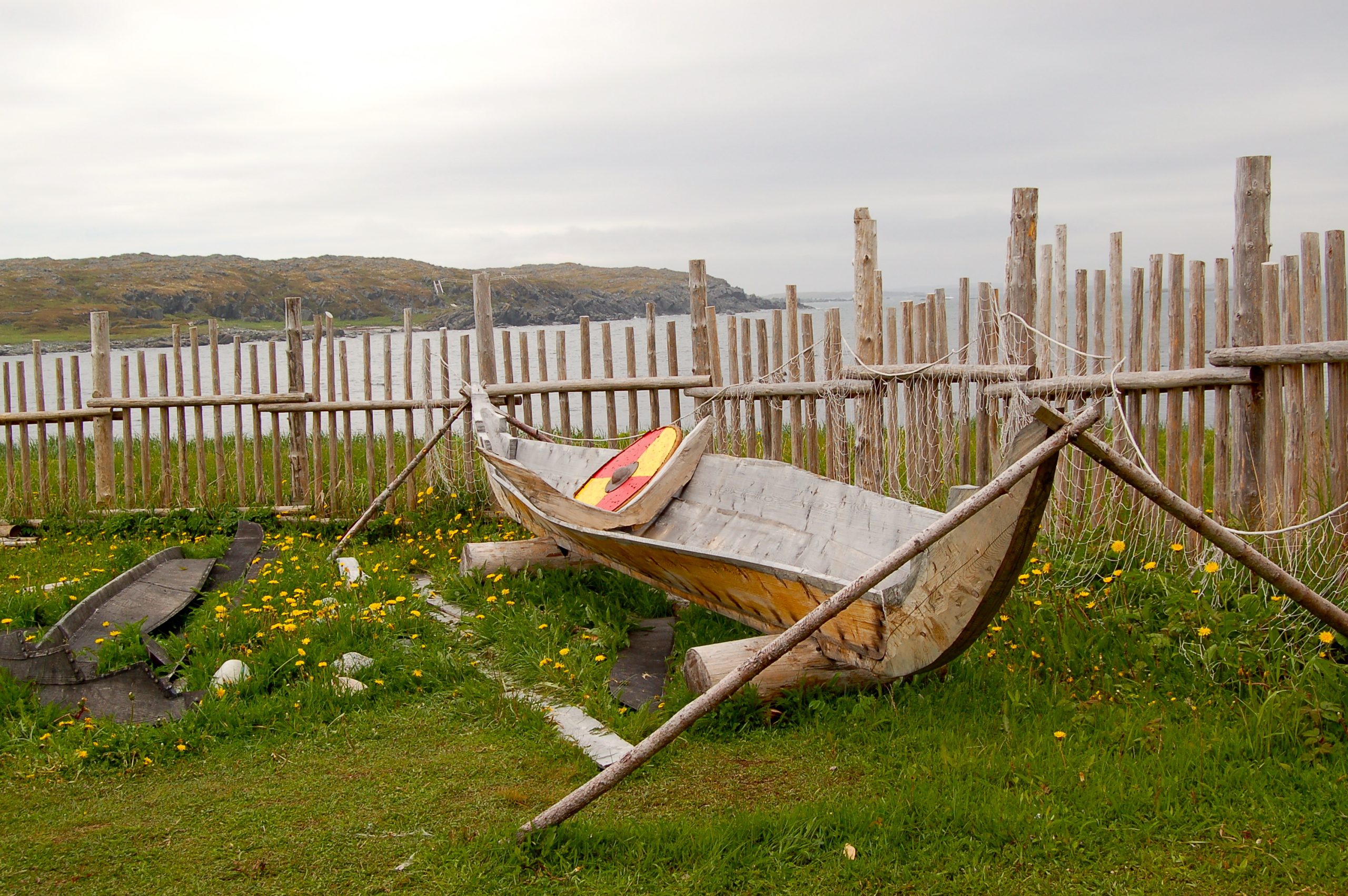Chapter 8: Norse America: Unveiling the Viking Legacy in North America

Warm-Up Questions

- Think about where you live now, or your hometown. How was it settled? Do you know the history of your area?
- What can scientists and historians use to learn about our ancient cultures?
- Why is it important to learn about historical cultures?
Read

Long before Christopher Columbus landed on the shores of North America, the continent had already hosted European visitors. At the end of the 10th century, Vikings, or Norsemen, set out to explore the Atlantic Ocean. This exploration led them to colonize Greenland and occupy a small Norse settlement in Newfoundland. The settlement was excavated in the 1960s, and it was named L’Anse aux Meadows, French for Meadow’s Cove.

In the year 982, Erik the Red was forced to leave his homeland of Iceland. During his three-year banishment, he settled on the southwest coast of Greenland. He named the area Greenland to interest others in following him and entice settlement. Eventually, there were three settlements during the Norse colonization of Greenland, with a population ranging from 2000-3000. They would trade goods such as fur, rope, sheep, whale blubber, and even polar bears with the people of Iceland. Greenland was mostly politically independent from the main Norse settlements and prospered for a period of 500 years. In the 14th century, however, the settlements began to decline, and the last marriage was recorded in 1408.
Archaeologists questioned for many years if the Norse had visited North America. There were Norse texts that described a location named Vinland, or Wineland, but these descriptions were mixed in with descriptions of fictional locations from Norse legends. There were also Norse accounts of Inuit captives and kayaks being taken back to Scandinavia. What archaeologists lacked was physical proof that Vikings had actually gone to North America. It was not until the 1960s that these theories were confirmed with the uncovering of L’Anse aux Meadows.
Anthropologists suggest that L’Anse aux Meadows was never meant to be a permanent settlement. Instead, it is thought that the Newfoundland settlement was temporary and dedicated to boat repair. There were eight buildings in the settlement: three halls, four huts, and a final hut dedicated to smelting. The capacity of these buildings suggests that up to 160 people could have lived at L’Anse aux Meadows. Originally, anthropologists thought that the area was occupied on and off for 20 years. According to a 2019 study, however, there could have been Norse activity in L’Anse aux Meadows for up to a century.

There were many common everyday items that were also left at the site. For example, there were knitting needles, spindles, and a bronze fastening pin. These items were important to the history of the Norse in North America, as it implies that women also resided at the settlement. Additionally, there were food remains found at the site that indicate the Vikings travelled south to obtain butternuts (also known as white walnuts), which do not grow in L’Anse aux Meadows.
This settlement, in present-day Newfoundland, was the only confirmed Viking habitation in North America outside of Greenland. Historians originally believed that the Norse word Vinland meant a land of grapes or vines, as it was often substituted with Wineland. What they now believe is that Vinland means Land of Meadows, a name given to the rolling hills and grassland that the Vikings called home long before other European settlers.
Comprehension Questions
Answer the following questions in complete sentences.
- What was the purpose of naming the area Greenland, according to Erik the Red?
- How do you feel about the way Erik the Red named Greenland to attract settlers? Do you think it was an effective strategy?
- What evidence did archaeologists find in the 1960s that confirmed Norse presence in North America?
- What was the suggested purpose of the L’Anse aux Meadows settlement according to anthropologists?
- What are your thoughts on the temporary nature of the L’Anse aux Meadows settlement? Why do you think it wasn’t intended to be permanent?
- What items found at L’Anse aux Meadows indicate that women resided at the settlement? Use information in the article to support your answer.
- What impact do you think the Norse presence in North America had on the indigenous populations they encountered? Use ideas from the article to support your ideas.
- What does the settlement at L’Anse aux Meadows suggest about Norse culture?
- What lessons do you think modern explorers and historians can learn from the Norse exploration and settlement patterns?
Vocabulary
Capacity
Confirmed
Decline
Eventually
Items
Location
Obtain
Period
Physical
Ranging
Resided
Site
Temporary
Texts

Vocabulary Practice
Definitions Exercise
Practise identifying the correct definition for each of the target words.
Parts of Speech Exercise
Read the sentence and guess the part of speech. Turn the card to see if you are correct.
Synonyms Exercise
Drag and drop the synonyms. There are two groups of words.
Fill in the Blanks Exercise
Write in the correct word from the word bank.
Media Attributions
- man in brown fur coat by Valentin Lacoste is licensed under the Unsplash license..
- a long boat with two people in it on a lake by Steinar Engeland is licensed under the Unsplash license.
- Viking settlements in North America by HistoryMaker18 is licensed under CC BY-SA 4.0.
- L’Anse aux Meadows National Historic Site by Megan em is licensed under CC BY-SA 3.0.
References
Arizona State University. (2024). EdPlus Voiceover Generator [Voiceover audio generator].
L’anse aux Meadows. (2024, November 19). In Wikipedia.
Microsoft. (2023). Copilot [Large language model].
Norse colonization of North America. (2024, October 16). In Wikipedia.
Artificial Intelligence Disclosure
- Microsoft Copilot was used as a brainstorming tool for the activities in this chapter.
- The Arizona State University EdPlus Voiceover Generator was used to create the audio recording of the reading, vocabulary words, and parts of speech exercise. Adaptations include modification of speed and/or timing, and comping of output takes.
Eventually - view the definition in the Longman Dictionary of Contemporary English Online [New Tab]
Range - view the definition in the Longman Dictionary of Contemporary English Online [New Tab]
Period - view the definition in the Longman Dictionary of Contemporary English Online [New Tab]
Decline - view the definition in the Longman Dictionary of Contemporary English Online [New Tab]
Text - view the definition in the Longman Dictionary of Contemporary English Online [New Tab]
Location - view the definition in the Longman Dictionary of Contemporary English Online [New Tab]
Physical - view the definition in the Longman Dictionary of Contemporary English Online [New Tab]
Confirm - view the definition in the Longman Dictionary of Contemporary English Online [New Tab]
Temporary - view the definition in the Longman Dictionary of Contemporary English Online [New Tab]
Capacity - view the definition in the Longman Dictionary of Contemporary English Online [New Tab]
Item - view the definition in the Longman Dictionary of Contemporary English Online [New Tab]
Site - view the definition in the Longman Dictionary of Contemporary English Online [New Tab]
Reside - view the definition in the Longman Dictionary of Contemporary English Online [New Tab]
Obtain - view the definition in the Longman Dictionary of Contemporary English Online [New Tab]

